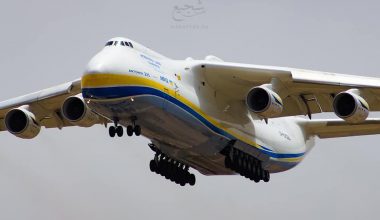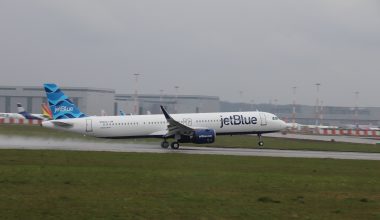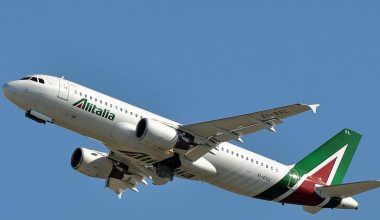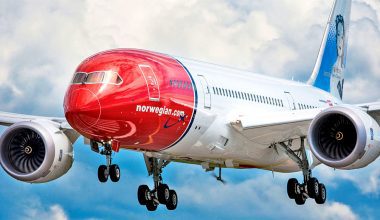British Airways, the UK’s flag carrier, is set to restart nonstop flights to Tokyo Haneda from November. Following easing COVID-19 restrictions in Japan, the carrier resumes London-Tokyo flights after a one-year suspension. Starting November 13, British Airways will operate a daily flight from London Heathrow Airport to Tokyo Haneda Airport, offering direct nonstop service between the two capitals.
Returning to Tokyo
The last time British Airways served the London-Tokyo route was in November 2021. Having suspended the route for the winter season, British Airways hoped to resume the flight in March 2022. The suspension period was extended once again to October 30, 2022.
In line with Japan’s loosening border control restrictions, British Airways will return to Japan with a once-daily service from London Heathrow to Tokyo Haneda. The state-owned carrier will deploy a state-of-the-art Boeing 787 Dreamliner to serve the route.
On Mondays, Wednesdays, Fridays, and Sundays, BA0007 will perform the LHR-HND route.
BA0007: Depart London Heathrow from Terminal 5 at 08:55 and arrive in Tokyo Haneda Terminal 3 at 07:35 the next day; total flight duration-13 hours 40 minutes
Similarly, BA008 will perform the return flight, i.e., on the HND-LHR route.
BA0008: Depart Tokyo Haneda from Terminal 3 at 09:45 and arrive at London Heathrow Terminal 5 at 15:25, total flight duration: 14 hours 40 minutes
BA0005 will operate the departure flights on the remaining days, taking off from London Heathrow at 11:45 and touching down in Tokyo at 10:25 the next day.
The return flight will be performed by BA0006, departing Tokyo Haneda at 13:15 and arriving in London Heathrow at 18:55, 14 hours 40 minutes.
Boeing 787-8 Dreamliner
British Airways passengers traveling between London and Tokyo can get the best customer experience onboard Boeing 787-8 Dreamliner, the most technologically advanced aircraft in the British Airways fleet. The aircraft features 214 seats across three cabins: 35 ‘Club World’ business class, 25 ‘World Traveler Plus’ premium economy, and 154 ‘World Traveler‘ economy seats. The fuel-efficient B787-8 jet is equipped with the latest Thales entertainment system, an in-seat chat system, an integrated LED mood lighting system, and an advanced monitoring system for safety. Customers can also enjoy the majestic aerial views offered by the large windows of the Boeing 787.

Airlines serving London Heathrow- Tokyo Haneda route
Besides the British flag carrier, Japan Airlines also operates a nonstop flight between London and Tokyo using Boeing 787 jet. Furthermore, British Airways has a codeshare partnership with Japan Airlines to offer one-stop connectivity from London to Tokyo. As per the codeshare agreement, British Airways operates a nearly 3-hour flight from London to Helsinki. The connecting flight bound for Tokyo is operated by Japan Airlines. Another option is the LHR-CDG-HND route, in which British Airways operates the first leg to Paris Charles De Gaulle and Japan Airlines takes care of the second leg.
Japan to loosen pandemic travel rules.
Following the outbreak of the coronavirus pandemic, Japan adopted some of the strictest travel restrictions in the world. With the gradual recovery in coronavirus infection cases, the country is looking to scrap most of its pandemic travel rules for foreign tourists. Effective the second week of October, Japan will allow independent tourists to visit the country easily without needing to arrange the visit through a travel agency.
Japan has lifted travel restrictions for foreign visitors entering the country. After more than two years, Japan finally welcomed international visitors only as a part of approved package tours, severely limiting the daily cap on foreign arrivals to 20000 people. Earlier a few weeks ago, Prime Minister Fumio Kishida announced to raise the daily arrival cap to 50,000 from September 7, allowing tourists who had a travel advisor, or proof of a local sponsor, to enter Japan.

Moving closer to full tourism recovery, Japan will drop current visa requirements for non-resident foreigners for short-term stays in the country and abandon its daily limits on entry from overseas from October 11. There won’t be restrictions on the daily number of visitors that can enter the country, nor will there be a need to obtain clearance via a Japanese travel agent.
The Japanese yen has plunged to a record low against the US dollar in more than two decades, and the government seeks to take advantage of the weak currency ahead of the fall travel season. Autumn is one of the peak tourism seasons in Japan, characterized by a striking transformation of maple and ginkgo trees, temperate weather, colorful foliage, etc.






